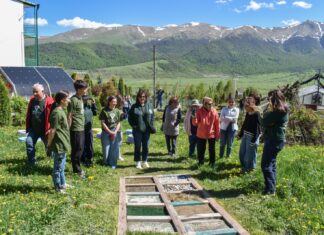CAMBRIDGE/BELMONT — Some years ago, when the topic of the prehistory of the Armenian highlands came up, the first things that would come to mind might be the megalithic structures of “the Armenian Stonehenge” — Karahunj or Zorats Karer near Sisian, Armenia, or various petroglyphs (rock carvings).
More recently, Armenia has become famous for the site of the oldest leather shoe and the oldest winery discovered in the world, a cave known as Areni-1.
Furthermore, it seems the Armenian highlands and Georgia contain sites which hold the oldest evidence of humans leaving Africa, and also sites where Homo sapiens interacted with Neanderthals.
A Cambridge Science Festival archaeology panel, titled “More than Bones,” at Harvard University’s Science Center on September 23, addressed these topics and more, while Areni-1 was discussed a second time at greater length at a September 26 lecture titled “Treasures of Areni-1 Cave,” at the National Association for Armenian Studies and Research (NAASR) building in nearby Belmont.

The initial panel was cosponsored by the Cambridge-Yerevan Sister City Association (CYSCA), Christina Maranci, Mashtots Chair in Armenian Studies at Harvard University and NAASR.
The week-long Cambridge Science Festival, an annual celebration of science, technology, engineering, art and math, is founded and produced by the MIT Museum. The stand-alone lecture was cosponsored by CYSCA and NAASR. Marc Mamigonian, NAASR’s academic director, served as moderator for both events.












